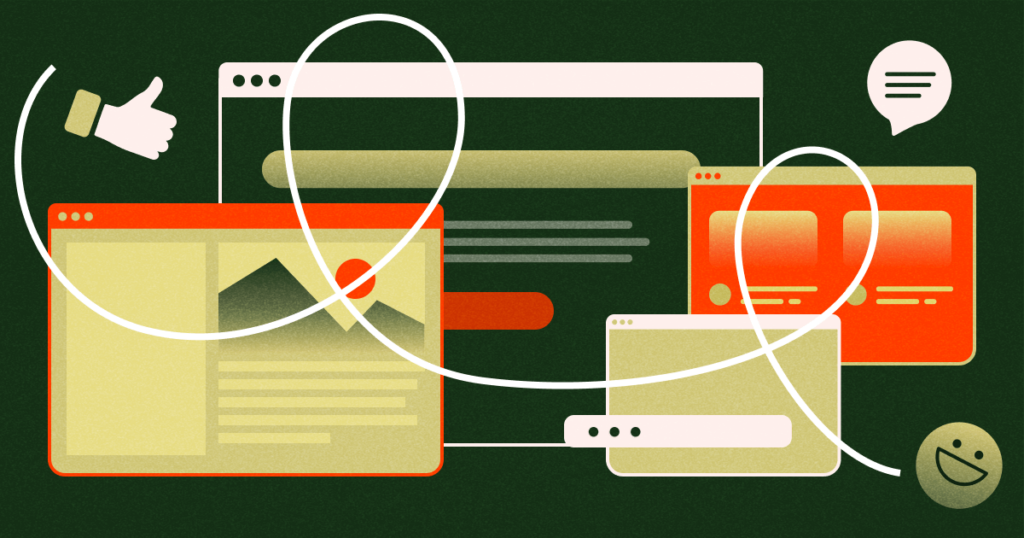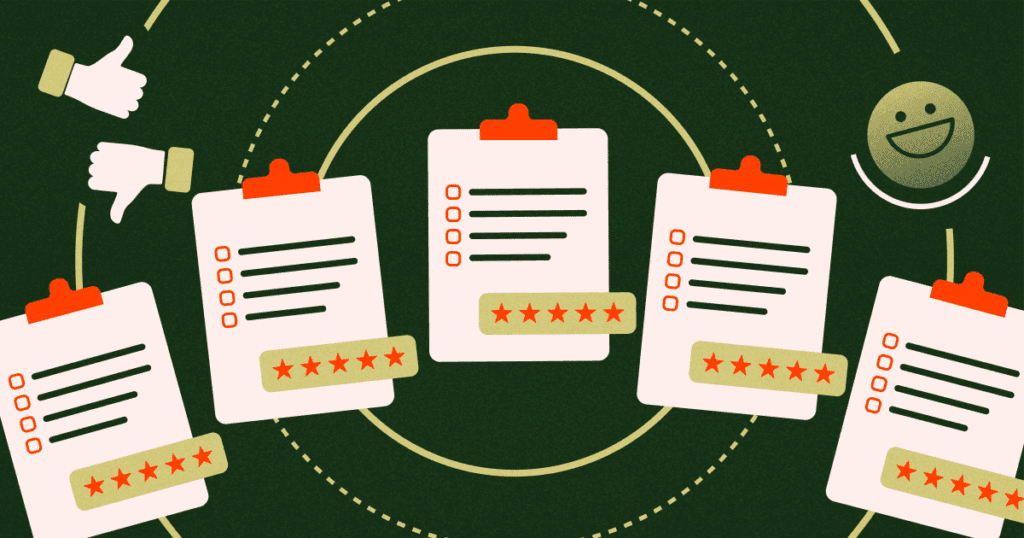If your company is like most companies, it puts significant stock into gathering and using consumer feedback, whether that’s through surveys, reviews, or other channels. A recent New York Times article offered an interesting take on the growing universality of companies’ requests for feedback and reviews. Mainly, its writer Eric Taub focused on it as a source of overwhelm.
In the digital world, user feedback requests are particularly ubiquitous. In the past, they’ve been effective toward getting people through a business’s literal or metaphorical door. Yet the article offers some food for thought: because consumer surveys and requests for feedback have historically been so useful, there’s now a virtual onslaught of them. As one interviewee, Colleen P. Kirk, professor of management and marketing at the New York Institute of Technology, put it: “Review requests are skyrocketing; everybody is inundated with them. Over time, consumers will get more skeptical of them.”
Among other outcomes, this new pattern has meant five-star reviews are now the default response. You might wonder, what’s so bad about that? When the act of providing user feedback is something rote, done for the sake of doing it, positive reviews are less meaningful, and comments are much less actionable. As a result, it’s likely that user feedback may not carry the weight it originally did.
Of course, that’s not to say user feedback doesn’t matter. It does—especially from a design lens, and especially now that standard methods of marketing have fallen out of favor with many audiences. But how much is too much? How much is enough? Let’s explore what value consumer input can offer your business, and how you can use it wisely and well.
What is the Role of User Feedback?
It’s important to remember that, in spite of the overwhelm that could result from too many requests for it, user feedback does play an important role. When it comes to web design in particular, it provides a strong basis for understanding user needs. It can allow your company to, in a direct and straightforward way, learn about users’ goals, pain points, preferences, perceptions. Getting a sense of their experiences means you can think critically about features that they value and any challenges they encounter. It simplifies diving into pending improvements because you have a clear list to investigate.

User feedback can give your business a more accurate sense of its target audience, validating any hypotheses and challenging any assumptions—both of which are vital to a strong business strategy. When you have a deeper knowledge of the audience’s pain points and preferences, you get a more detailed idea of who your customers are, and what they want out of a product or web experience. This puts your company in a stronger position to build customized solutions to their problems, which in turn can build loyalty over time, as well as give your team an edge against competitors. Once you begin to swiftly respond to consumer preferences and ideas, you’ll develop the habit of quickly adapting to changing market dynamics as a whole, and be all the stronger for it.
What User Feedback Can’t Do
That said, outright requests for user feedback do not necessarily solve all problems, or even reveal them. Jessica Tenuta, a technology writer and the co-founder and Chief Product Officer of AI brand Packback, puts it this way:
Instead, she writes, “Some of the most valuable insights about your product are ‘silent,’ locked in the things people do, not in the things they say.” By design, user feedback cannot provide those insights. Instead, user behavior analysis reveals them—for example, by tracking conversion rates or analyzing user paths.
If this is the case, what are some alternatives your team can try instead? Observing user behavior, for one, can help uncover any surprising, unexpected, or unintended ways people use your company’s products. This can also provide insight into unrealized or unconscious desires about your products that your users have.
Another solution to the limitations of user feedback is considering everything in context.
When interpreting the responses you’ve received, sometimes the real value can be found when you extract the meaning behind the words, and look for common threads rather than taking every little piece of input and trying to make it speak for itself. In addition, considering patterns over time can reveal what might have otherwise been missed when looking at user feedback as pieces of individual data. Looking at changes and consistencies in the input you receive can highlight certain kinds of issues, and give you more information than you’d expect. Basically, it’s an important reminder that looking at the big picture pays off.
How to Collect Effective User Feedback — and How to Use it
These points pose the question of how to collect and apply customer feedback in a way that benefits your business, and makes its services and products more user-friendly. According to a report from Nielsen Norman Group, an effective survey for user or customer feedback is one that’s timely, concise, and appreciative. It avoids the trap of incessantly or repeatedly asking for input—that’s a huge user turn-off. Instead, give people options. Allow for a variety of methods of providing insight, which has been shown to increase a company’s chances of getting detailed and honest feedback. When you have that more in-depth range of both positive and negative insights, you can know what you’re getting is meaningful, and that it can be used for growth and evolution.

When it comes to productively applying insights, taking an iterative approach is key. Consider user feedback as a compass that can guide you to develop a product, service, or design feature in phases. Testing and validating is a powerful way to put user feedback into practice—one that demonstrates that your company values growth, and makes the people who engage with it part of that growth process. This clearly demonstrates to users that you value them, too.
Create Digital Experiences that Draw Users Back
Understanding the value of user feedback means both being selective in gathering it and being savvy when applying it. The capacity to do this well begins with having a user-first mentality, and being willing to build digital experiences that reflect that mindset.
At Isadora Agency, this is our foundation. Everything we strategize and create begins with this goal of deep user engagement. You can see this approach in past client projects—for example, our work with Popcornopolis leveraged user research and feedback to streamline the brand website’s navigation, enhance the shopping experience, and drive conversions. When you’re ready to partner with an agency that can help your company cultivate this kind of relationship with its clients, get in touch. We’ll help you tap into the more human side of creative innovation, and connect with your audiences in meaningful ways.
